Optimal conditions for the growth of cereals: at what temperature does wheat germinate at home and in open ground
Wheat, like many cereal crops, is easy to germinate at home. Eating wheat germ has enormous health benefits. The product is rich in vitamins, minerals and amino acids, strengthens the immune system, cleanses the intestines, normalizes the gastrointestinal tract, and increases overall energy levels.
What is required to germinate wheat?
Before you start germination, it is important to make sure you have the necessary equipment. The list is small, but it is better if all the items are at hand. You will need:
- Plastic, glass or ceramic container. You cannot use metal bowls - the grain will turn sour in them. The bottom of the dish should be wide enough so that the wheat is arranged in 1-2 layers.
- Gauze or light rag.
- Pure water.
- Fine sieve.
The grain itself is also important. An indicator of its quality is the simultaneous germination of almost all specimens.
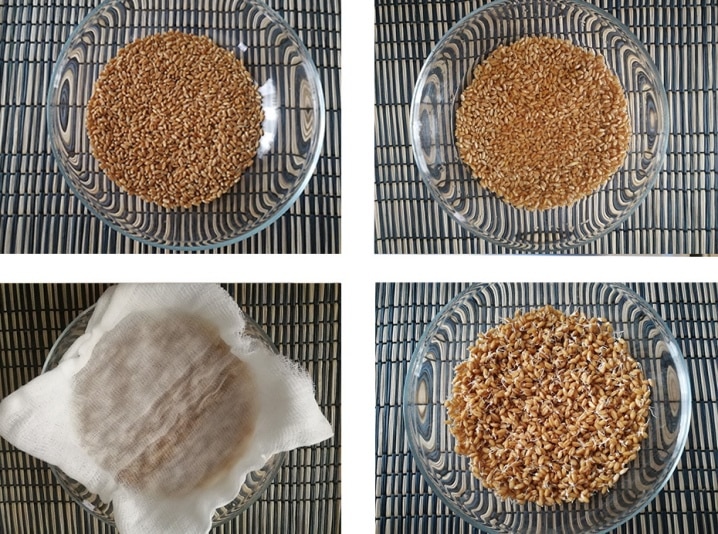
Optimal conditions
Even high-quality grains sprout only if a number of conditions are met. Tair temperature, light, humidity - all these factors affect the result.
Wheat grains are afraid of both very low and high temperatures. A warm environment is considered optimal for germination - +20...+25°C.
Germination is carried out in a humid environment, but so that there is no excess water. It is best to cover the grains with gauze soaked in water or rinse them every 8 hours.
Important! If there is too much liquid, the grains will not germinate, but will simply swell and burst.
The place for germination should be bright, but without direct sunlight. Grains need access to fresh air, but are afraid of drafts.
The main mistakes due to which wheat does not germinate:
- too much water;
- a lot of grains in a small bowl;
- drying of grains that have already begun to germinate;
- Germination takes too long.
An indicator of the right product is a pleasant, fresh aroma.
The influence of temperature on wheat
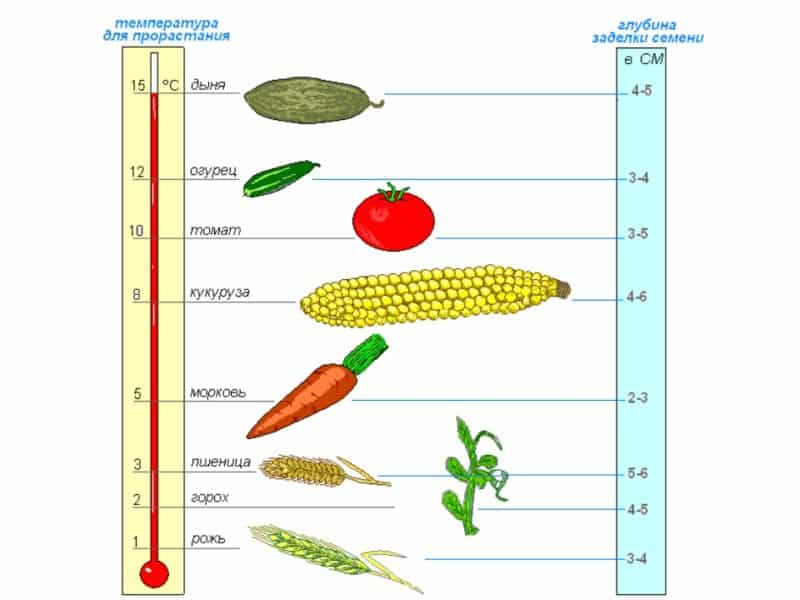
All stages of plant development are directly dependent on the sum of active temperatures. An optimal transition from one phase to another is only possible if the plant is in a favorable environment for a strictly defined time. Wheat is extremely sensitive to sudden changes in temperature, which in many cases leads to damage or even death of the crop.
Heat
The effect of high temperature on wheat is often more destructive than severe frosts, from which plants are usually protected by pre-hardening. The cereal crop exhibits the greatest sensitivity to warming after sowing, when shoots and stems form.
If the soil temperature exceeds +24°C, the grains go into a dormant state, stopping germination. First of all, this applies to young seeds, but with a further increase in values, growth slows down in wheat that is more resistant to excessive heat.
High temperatures negatively affect not only the seeds, but also the adult plant. When the air temperature rises above +24°C, photosynthesis in the leaves first slows down, and at higher values it stops altogether.When the leaves are heated above +29...+32°C, the plant burns calories faster than it accumulates, which leads to the so-called negative growth, in which the ear loses its original size.
When heated to a temperature of +35°C or more, the main enzymes of the plant are destroyed. Too rapid accumulation of the sum of active temperatures leads to the fact that the nutrients obtained as a result of photosynthesis become insufficient for normal development. The leaves become increasingly smaller, and in some cases an ear does not form.
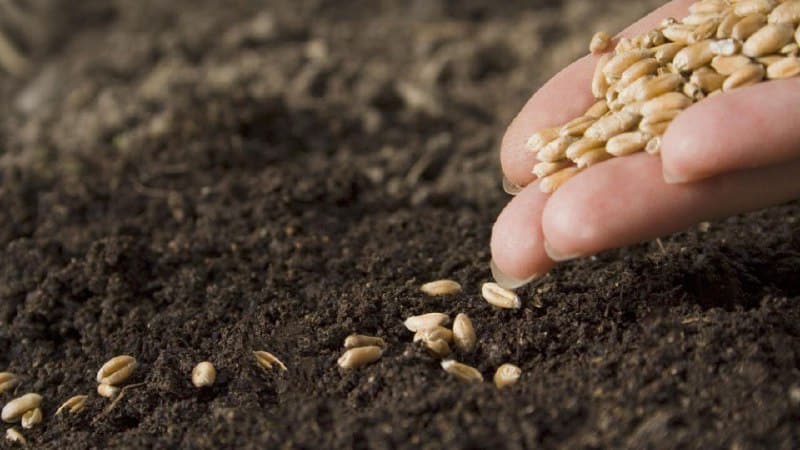
Low temperature
The effect of low temperatures on wheat leads to different consequences. The roots of the plant die when the soil freezes to -3...-5°C, but this rarely happens. Much more dangerous is a cold snap after the growth point has reached the surface.
Particularly unfavorable conditions are considered to be early snowfalls, then blown away by the wind. In this case, the plants will not be protected by snow cover.
Reference. If snow insulates the growing point from the effects of cold, the cereal can withstand frosts down to -34°C.
Unhardened wheat leaves can withstand temperatures down to -7...-9°C, after hardening - up to -12...-18°C. The critical value for spikelets and flowers is considered to be -2...-3°C. This is the main reason that the growth point is not brought to the surface until the required amount of active temperatures accumulates or the length of daylight hours increases.
As a result of the influence of frost on the ear, the main stem often dies, becomes whitish and empty. The most resistant to the influence of low temperatures are plants with a well-developed root system and having 3-4 leaves. Cereals with a large number of shoots are less susceptible to hardening, and therefore are more susceptible to death from frost.
Grain sensitivity
Wheat grains are not too susceptible to temperature fluctuations, but are afraid of drought, lack of fresh air and fungal infections. These are the main factors affecting germination.
Sum of active temperatures
Depending on the period of development, the plant requires an unequal amount of heat. On average, at +14...+16°C, seedlings appear after 7–9 days. This means that the sum of active temperatures in this period is approximately 116–139°C.
At what temperature does wheat germinate in open ground?
Different varieties of wheat different conditions are required for germination and further development.
Winter and spring crops differ not only in planting dates, but also in temperature requirements.
Winter
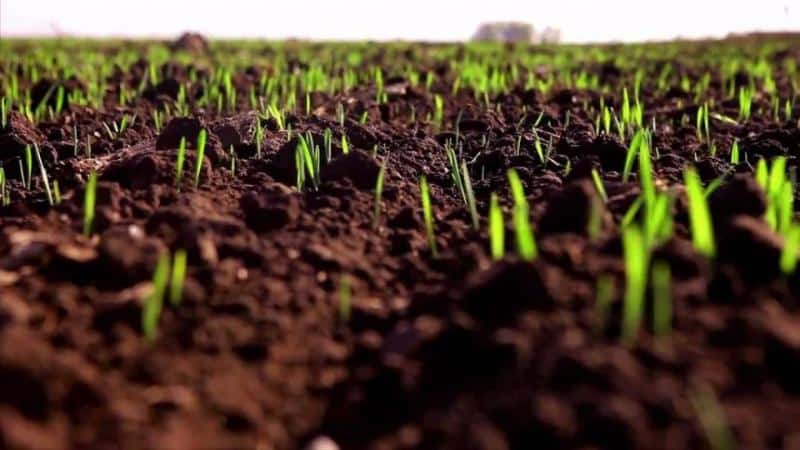
It is best to sow winter wheat at a stable daytime air temperature of +10...+12°C. It is desirable that the weather be dry and warm, with slight frosts at night. This promotes hardening and accumulation of carbohydrates for a favorable wintering.
With a further decrease in temperature, wheat growth stops, and when the air warms up to +5°C, it resumes. Although modern varieties of winter wheat can withstand frosts down to -16...-18°C, and in the presence of snow cover - up to -25...-30°C, sudden temperature changes between day and night are extremely unfavorable for plants.
For the growth of winter wheat from sowing to full ripeness a sum of active temperatures in the range of 1850–2200°C is required.
Yarovaya
Spring wheat begins to germinate at +2…+4°С, the maximum germination temperature is +25…+30°С. With further warming, the grains go into a dormant state. Subsequent development of the plant occurs at a minimum of +4...+5°C.
Important! Without protective snow cover, frosts of more than -6°C are destructive for the crop.
The sum of active temperatures for spring wheat is approximately 1600–1800°C from the moment the first leaf appears until full ripeness.
Wheat for germination
To successfully germinate cereal at home, it is not enough to simply follow the instructions. The quality of the grain itself also plays a big role.
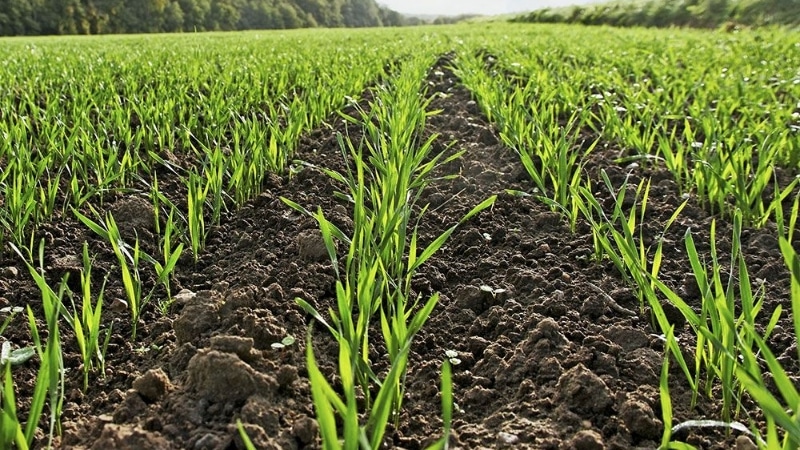
Where can I buy
It is better to buy raw materials in large supermarkets. Many manufacturers produce packaged grains with a special mark that they are intended for growing at home. Before purchasing, it is important to pay attention to the expiration date of the product: seeds packaged more than a year ago will almost certainly not germinate properly.
If you want more naturalness, it is better to purchase raw materials in bulk at any food market. However, in this case, it is important to contact trusted sellers, since grains are often treated with special chemical compounds to increase shelf life and protect against spoilage.
What should the grains be like?
It will not be possible to determine the chemical treatment of the product with the naked eye, but there are indirect signs of high-quality seeds. It is better to choose grains that are smooth, identical in shape and size, with a yellowish-brown tint, and dry to the touch.
Changes in shape, the presence of a whitish coating, broken or cracked seeds are a sign of a low-quality product.
How much to germinate at one time
The seeds are placed on the bottom of the tray in a thin layer so as not to block air access to the lower specimens. On average, about 2 cups of seeds are placed in a tray measuring 40x40 cm.
Although eating wheat germ is very beneficial, it is better to start with small portions. The product is bad stored even in the refrigerator, so there is no point in germinating many grains at once. For starters, a serving of 0.5 cups of dry wheat seeds per person is suitable.
How to germinate wheat at home
It's easy to germinate cereal yourself. The grains are thoroughly washed and laid out in a thin layer in a container. After this, pour clean water so that it lightly covers the material. Cover everything with gauze or a light cloth soaked in water and place it in a place protected from direct sunlight and drafts. It is very important that the air temperature is approximately +21...+24°C.
Wheat must be washed 1-2 times a day before use. Usually the first shoots appear the next day. The product is used for food when the length of the sprouts reaches 1-2 mm.
Important! If you wash the seeds every 8 hours, you won't need wet gauze.
Tips and tricks
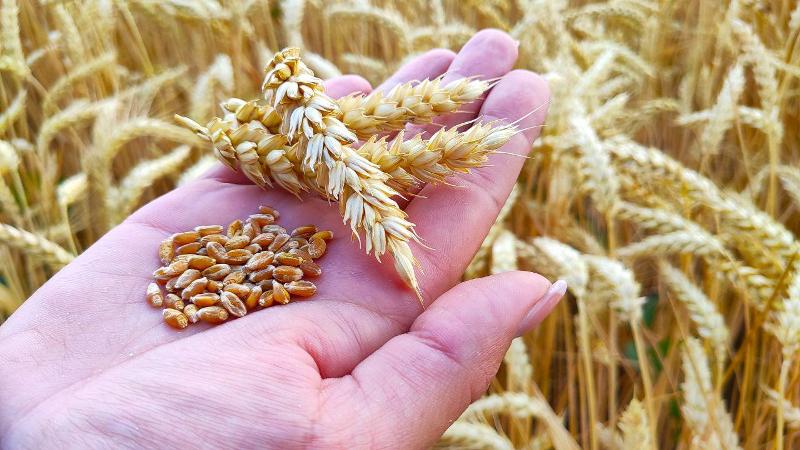
It is more convenient to wash the grains using a small sieve. Floating seeds are discarded due to poor quality.
Wheat grains that have not sprouted within 2 days are unfit for consumption.
Sprouts are used as a separate dish or as a healthy addition to salads and side dishes. The effect will be noticeable only with regular use. The beneficial substances from sprouts are best absorbed on an empty stomach, especially if they are eaten together with sprouted legumes, such as mung bean.
Chewing the product thoroughly promotes better absorption and strengthens the gums and teeth.
Conclusion
Sprouting wheat at home does not require much time or the purchase of special equipment. The grains are unpretentious; the greatest damage to them is caused by high temperature, lack of moisture or fresh air.The useful product is obtained within 1–3 days and stored in the refrigerator for no more than 5 days.